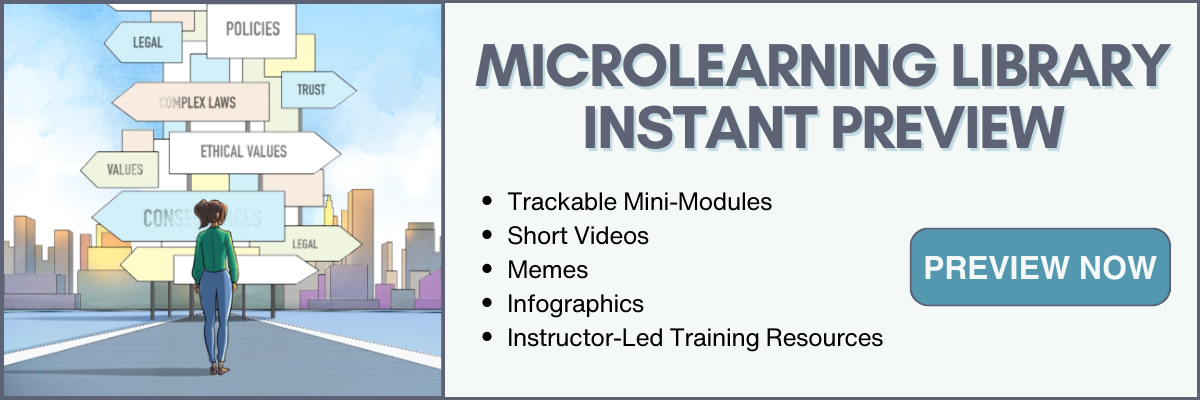In the rapidly evolving corporate landscape, compliance officers face the critical challenge of ensuring that their training programs are effective, accessible, and engaging. With the workforce becoming increasingly diverse and dispersed, especially post-pandemic, traditional methods of adult learning have shown limitations. This is where microlearning emerges as a beacon of hope. But what makes microlearning more effective than conventional training methods, particularly in compliance training?
Microlearning refers to a teaching style that delivers content in small, specific bursts. The focus is on key concepts, skills, or topics, often in multimedia formats, allowing learners to control the pace and path of their learning experience.
The Science Behind Microlearning
- Cognitive Load Theory: Our brains can only process a limited amount of information at any given time. Microlearning reduces cognitive overload, making it easier for adults to absorb, retain, and recall information.
- Spaced Repetition: Microlearning often incorporates spaced repetition, a learning technique that increases the intervals of time between subsequent review of previously learned material. This approach leverages the psychological spacing effect, leading to more effective memory consolidation.
- Neuroplasticity and Attention Span: Adult brains are constantly evolving. Microlearning caters to the contemporary attention span, which is shorter in the digital age, and helps in forming stronger neural connections for longer-term memory retention.
Post-Pandemic Effectiveness
The pandemic dramatically altered the workplace landscape, leading to increased remote working and digital interaction. In this context, microlearning became more relevant due to a few factors:
- Flexibility: It fits into the unpredictable schedules of remote workers.
- Digital Adaptation: Microlearning often utilizes digital platforms, aligning well with the increased reliance on digital tools post-pandemic.
- Stress Management: Shorter learning sessions are less overwhelming and more manageable for employees dealing with the anxieties and stresses of the post-COVID era.
Microlearning and Adult Learning Theory
Adult Learning Theory, or Andragogy, outlines key principles for effectively teaching adults. Microlearning aligns with these principles in several ways:
- Self-Directed Learning: Adults prefer to take control of their learning. Microlearning’s modular nature allows learners to choose what and when to learn.
- Experience-Based: Adults bring a wealth of experience to the learning process. Microlearning modules can be designed to relate directly to these experiences, making the learning more relevant and engaging.
- Readiness to Learn: Adults are more interested in learning subjects that have immediate relevance to their job or personal life. Microlearning’s focus on specific skills or knowledge areas meets this need effectively.
- Problem-Centered: Adults are motivated by learning that aids in solving real-world problems. Microlearning can be tailored to address specific compliance issues or scenarios, making it highly applicable and practical.
For compliance officers striving to ensure that their training programs are effective and resonate with their employees, microlearning offers a powerful solution. By aligning with the principles of adult learning theory and catering to the modern brain’s processing capabilities, microlearning stands out as a highly effective method, especially in the post-pandemic era. It’s not just about delivering content; it’s about ensuring that the content leads to ethical and legally compliant choices in the workplace. Microlearning is the key to unlocking this potential in adult learners.
___________________________________________________________________________________________________________________
